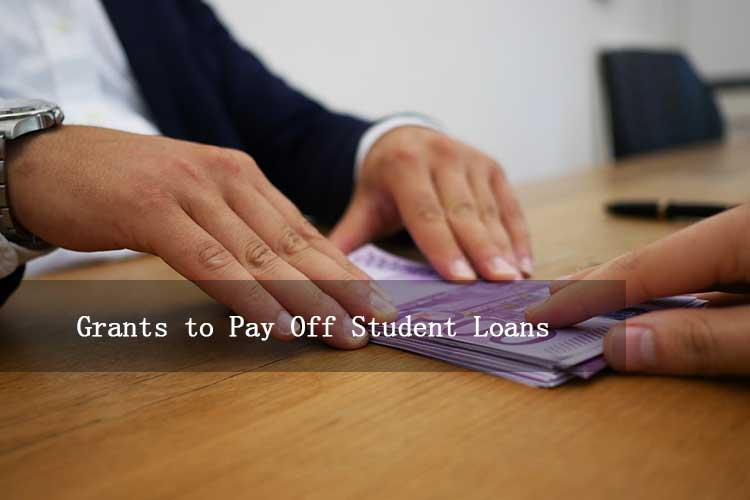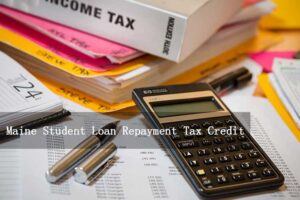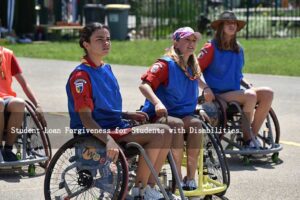
Managing student loans can feel overwhelming, particularly with the increasing expenses associated with education. Fortunately, grants present a fantastic chance for borrowers to lessen or completely wipe out their student debt without the stress of repayment. Unlike loans that require repayment with interest, grants provide financial support that doesn’t have to be paid back. In this article, we’ll delve into different types of Grants to Pay Off Student Loans, how to locate them, and the application process.
What Are Grants to Pay Off Student Loans?
Grants designed to help pay off student loans are financial resources aimed at assisting individuals in reducing or completely eliminating their student debt. These grants are typically offered by federal or state governments, employers, nonprofit organizations, or specific sectors such as healthcare and education. The major advantage of grants is that they do not require repayment, unlike loans, making them a very appealing choice for those struggling with student debt.
That said, many grants have specific eligibility requirements and may necessitate that recipients work in a particular field or area for a set amount of time. Familiarizing yourself with the various types of grants available can aid you in navigating the options and finding the best fit for your financial needs.
Federal Grants to Pay Off Student Loans
The federal government offers several programs designed to help individuals reduce their student loan debt. Here are some key programs to explore:
1. Public Service Loan Forgiveness (PSLF)
One of the most well-known federal programs, Public Service Loan Forgiveness (PSLF), offers debt relief to individuals working in qualifying public service jobs. If you work for a government or nonprofit organization and make 120 qualifying monthly payments (about 10 years of payments) under an income-driven repayment plan, your remaining federal loan balance can be forgiven.
- Eligibility: You must work full-time for a qualifying public service employer.
- Loan Type: Federal Direct Loans.
- Application: Submit the PSLF application form through your loan servicer after making 120 qualifying payments.
2. Teacher Loan Forgiveness
The Teacher Loan Forgiveness program is designed for teachers who work in low-income schools or educational service agencies. Eligible teachers can receive up to $17,500 in loan forgiveness after five consecutive years of teaching.
- Eligibility: You must be a highly qualified teacher in a low-income school.
- Loan Type: Federal Direct Loans and Stafford Loans.
- Application: After completing five years of service, apply through your loan servicer.
3. Income-Driven Repayment Forgiveness
While not technically a grant, Income-Driven Repayment Forgiveness can offer relief for those who make payments under an income-driven repayment plan. After 20 or 25 years (depending on the plan), any remaining loan balance can be forgiven.
- Eligibility: You must be enrolled in an income-driven repayment plan.
- Loan Type: Federal Direct Loans.
- Application: Automatically applies after reaching the required number of payments.
State-Based Loan Forgiveness Programs
Many states offer grants and loan forgiveness programs for residents who work in specific fields. These programs often target professions that are in high demand in certain areas, such as healthcare, education, or law enforcement.
1. California State Loan Repayment Program (SLRP)
The California State Loan Repayment Program provides loan repayment grants for healthcare professionals working in Health Professional Shortage Areas (HPSAs). Eligible individuals can receive up to $50,000 in loan repayment assistance in exchange for a two-year service commitment.
- Eligibility: You must work full-time in an HPSA and meet other program criteria.
- Loan Type: Federal and private loans may be eligible.
- Application: Submit through the California Department of Health Services.
2. New York State Get On Your Feet Loan Forgiveness Program
This program helps recent graduates living in New York State who are participating in an income-driven repayment plan. Recipients can receive repayment assistance for up to 24 months.
- Eligibility: You must be a New York resident, graduate from a NYS college, and participate in an income-driven repayment plan.
- Loan Type: Federal Direct Loans.
- Application: Apply through the New York State Higher Education Services Corporation (HESC) website.
Employer-Sponsored Loan Repayment Assistance Programs
Employer Loan Repayment Programs: Increasingly, employers are offering student loan repayment assistance as part of their benefits packages. These programs work like grants by providing financial aid to help employees pay down their student loan debt. Many large companies, including Google, Aetna, and PwC, provide a fixed monthly contribution toward loans, typically with a capped total amount. Eligibility is based on employment at companies offering these programs, and they often apply to both federal and private loans. Application processes vary depending on the employer, so it’s important to check with your HR department.
Federal Employee Loan Repayment Program: Federal employees can benefit from the Federal Student Loan Repayment Program, which provides up to $10,000 per year, with a lifetime limit of $60,000, in loan repayment assistance. In exchange, employees must commit to working for the federal government for at least three years. This program specifically applies to Federal Direct Loans, and applications are made through the federal agency’s HR department.
Loan Forgiveness for Specific Professions
Nurse Corps Loan Repayment Program: This program offers loan repayment assistance to registered nurses, nurse practitioners, and nurse faculty working in underserved areas. Eligible participants can receive up to 85% of their student loan debt repaid over two to three years of service. Applicants must work in a Health Professional Shortage Area (HPSA), and both federal and private loans may be eligible. To apply, individuals must go through the Health Resources & Services Administration (HRSA).
Attorney Student Loan Repayment Program (ASLRP): The Department of Justice (DOJ) provides loan repayment support to attorneys working in public service within the DOJ. Participants can receive up to $6,000 annually in loan repayment assistance, with a lifetime limit of $60,000. This program is available for attorneys employed by the DOJ, and only Federal Direct Loans are eligible. Applications are submitted through the DOJ’s internal process.
How to Apply for Grants to Pay Off Student Loans
When applying for grants to pay off student loans, the process begins with researching eligible grants. Various federal, state, employer, and profession-specific grants are available, so it’s essential to find the ones that match your career path and location.
Next, it’s important to check eligibility requirements. Every grant has specific criteria, which may involve working in a particular field, residing in underserved areas, or being enrolled in an income-driven repayment plan. Make sure you meet these qualifications before moving forward.
Once you’ve identified suitable grants, prepare the necessary documents. Typical documentation includes proof of employment, income details, loan information, and sometimes a signed service agreement. Ensuring you have all paperwork ready can streamline the process.
Following this, submit your application according to the grant program’s instructions. Ensure you meet deadlines to avoid disqualification. Finally, after submission, it’s crucial to follow up on the application status. Timely follow-ups can help address any additional requirements and improve your chances of approval.
Conclusion
Grants to pay off student loans provide an invaluable resource for borrowers looking to reduce their debt without adding more financial obligations. Whether you’re considering federal or state initiatives, employer-sponsored help, or grants tailored to specific professions, there are numerous opportunities available to assist you in alleviating student debt. By familiarizing yourself with your choices and carefully managing the application process, you can make meaningful progress toward achieving financial independence.



